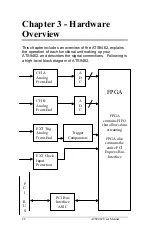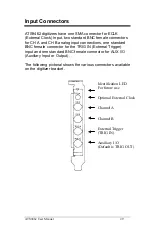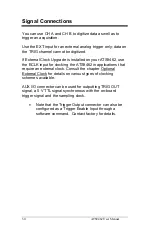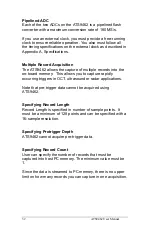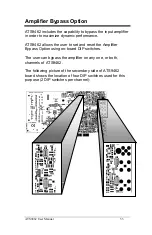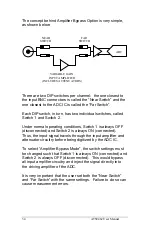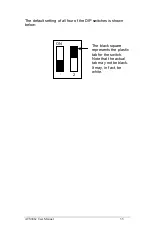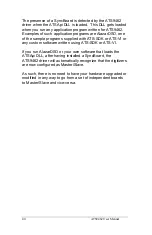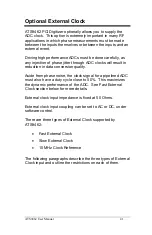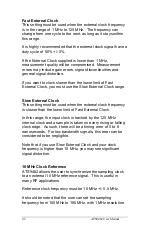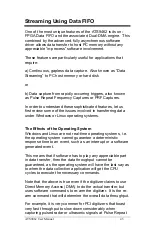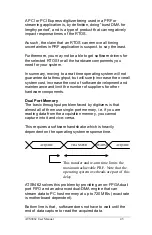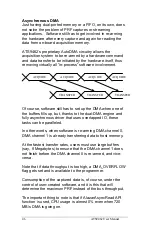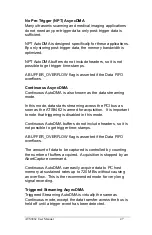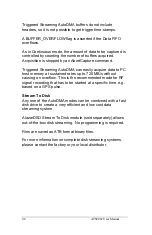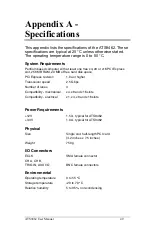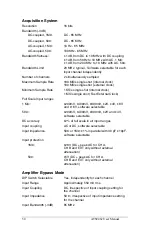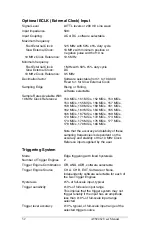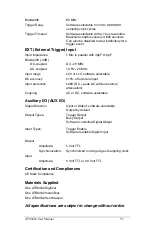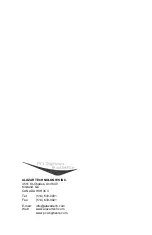
42
ATS9462 User Manual
Fast External Clock
This setting must be used when the external clock frequency
is in the range of 1 MHz to 125 MHz. The frequency can
change from one cycle to the next, as long as it stays within
this range.
It is highly recommended that the external clock signal have a
duty cycle of 50% +/- 5%.
If the External Clock supplied is lower than 1 MHz,
measurement quality will be compromised. Measurement
errors may include gain errors, signal discontinuities and
general signal distortion.
If you want to clock slower than the lower limit of Fast
External Clock, you must use the Slow External Clock range.
Slow External Clock
This setting must be used when the external clock frequency
is slower than the lower limit of Fast External Clock.
In this range, the input clock is tracked by the 125 MHz
internal clock and a sample is taken on every rising or falling
clock edge. As such, there will be a timing error of 0 to 8
nanoseconds. For low bandwidth signals, this error can be
considered to be negligible.
Note that if you use Slow External Clock and your clock
frequency is higher than 10 MHz, you may see significant
signal distortion.
10 MHz Clock Reference
ATS9462 allows the user to synchronize the sampling clock
to an external 10 MHz reference signal. This is useful in
many RF applications.
Reference clock frequency must be 10 MHz +/- 0.5 MHz.
It should be noted that the user can set the sampling
frequency from 150 MHz to 180 MHz, with 1 MHz resolution.

